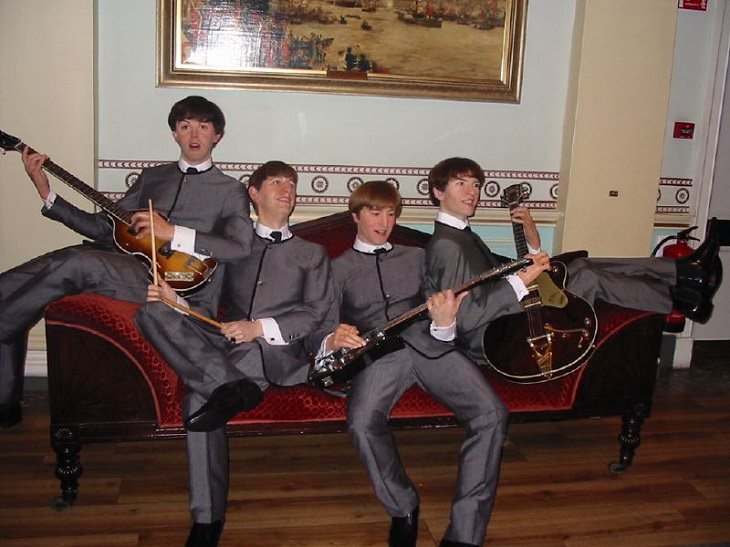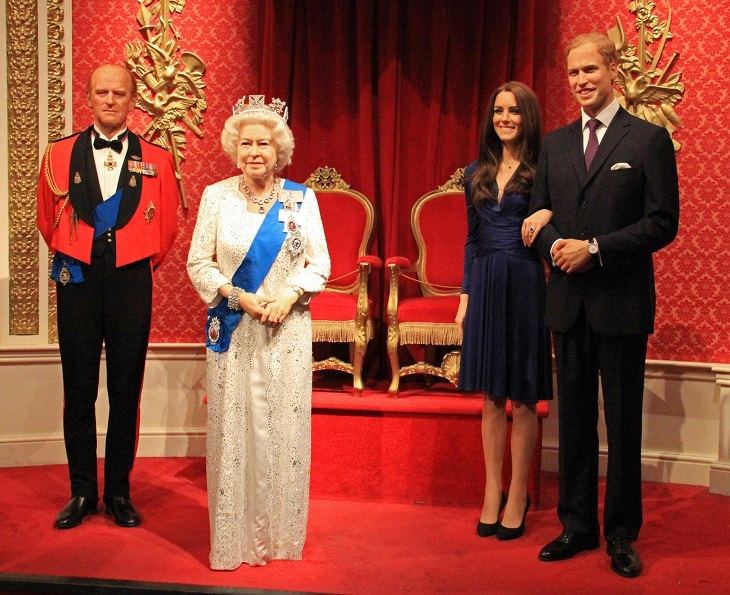
For the majority of Parisians, a stroll through the ruins of the Bastille in the summer of 1789 was the ultimate exercise in free will – the chance to trample over the regime’s most notorious symbol of oppression. However, for Madame Tussaud – then the 27-year-old protégée of famed waxmaker Philippe Curtius – the experience would shape her destiny.
While going down the narrow stairs, her foot slipped and she was saved by Maximilien Robespierre. Little did she know that a few years later, she’d have his severed head in her lap in order to take a cast from it after his execution.
Like her apocryphal tour of the Bastille, it’s almost impossible to separate the French waxworker’s life and lore. A baptismal record places her birth in Strasbourg, France, on December 7th, 1761. In a rather grisly portent of Tussaud’s future associations, her absent father came from a long line of public executioners dating back to the 15th century. Her mother was a housekeeper for Curtius – then a resident of Berne, Switzerland, and a doctor by training – fueling suspicion among scholars that Curtius and Tussaud’s mother may have been siblings or secret lovers.

Whether he was Tussuad’s father, uncle, or simply a benevolent physician, Curtius soon assumed the role of her guardian and artistic mentor. After impressing the visiting Prince de Conti, a cousin of Louis XV, with a small museum of anatomical wax miniatures produced as part of his medical practice, he accepted patronage to pursue wax modeling as his primary vocation in Paris. Tussaud and her mother joined him shortly after.
Curtius’ move was very well-timed. Though wax modeling was an established art form for centuries – commonly used for religious effigies, as well as the teaching of human anatomy – it was only in the 18th century that waxworks began to emerge as a source of popular entertainment for paying customers.
As an entrepreneur that was ahead of his time, Curtius intuitively grasped that wax modeling offered a unique way to stage current events for a novelty-hungry populace. It also offered customers a titillating brush with celebrity. On both accounts, he was widely successful.
By the early 1770s, Curtius had set up a permanent shop at 20 Boulevard du Temple – the street which had the most theaters in the city – where he plied visitors with wax renderings of the most notorious statesmen and criminals alike.

The building was Curtius’ workshop and home, affording Tussaud immediate access to both the craft of wax modeling and the most eclectic spectacles that Paris had to offer. In the words of one visitor to the area, “There are chairs set up for those who want to watch and for those who want to be watched – cafés fitted up with an orchestra and French and Italian singers; pastry cooks, restaurant-keepers, marionettes, acrobats, giants, dwarfs, ferocious beasts, sea monsters, wax figures, automatons, and ventriloquists.”
By the time Curtius passed away in 1794, bequeathing his iconic collections and workshop to Tussaud, she had spent decades mastering both the art and accounts of the waxworks. However, her career assumed a more morbid character than her guardian’s. Whereas Curtius had made a name for himself by largely modeling live figures – the most sought-after visages of Tussaud’s day were those that had most recently had their head chopped off by the guillotine.
Though Tussaud claimed that she was forced by the National Assembly to model the beheaded busts of Jean-Paul Marat, Robespierre, Louis XVI, and Marie Antoinette as a brutal chronicle of the Revolution, her motivation was like financial. There were even credible rumors that she may even have had an under-the-table arrangement with the executioner Charles-Henri Sanson, who, for a small fee, would provide her with the severed heads of the most newsworthy victims before their burial.
However, as the Revolution careened out of control, Tussaud found herself unable to compete with the daily gore and depravity of Parisian life. Violence was now free and real. On the Champs- Elysées, toy guillotines were sold as souvenirs; women sported gold and silver renderings of the deadly contraption as brooches, pins, combs, and earrings. Such was the fervor of the moment that one restaurant with a view of the city’s main guillotine printed the names of each day’s victims on their menus.

Therefore, in 1802, Tussaud – now 40 years old and low on funds – set out for the United Kingdom. The country’s voracious appetite for tales of the Revolution would provide her livelihood for the rest of her life. Tussaud’s husband, a profligate gambling addict, and debtor assumed full control of the Boulevard du Temple waxworks. The business floundered, then failed. Tussaud never went back to France again.
As in Paris, Tussaud arrived in Great Britain to find a burgeoning middle class willing to pay decent money for the chance to view and touch the most consequential figures of the time. As there would be no daily papers published outside of London until 1855, Tussaud spent her first 33 years abroad traveling the country’s back roads.
While Tussaud’s craftsmanship was uncanny, what separated her from her competitors was the supposed intimacy that she shared with her subjects, which lent her exhibition an unparalleled veneer of drama and prestige.
In 1835, Tussaud finally put down permanent roots on London’s Baker Street, the fulcrum of today’s sprawling wax empire. By the time she died in 1850, it had become one of the most successful tourist venues in the country.
Source: artsy